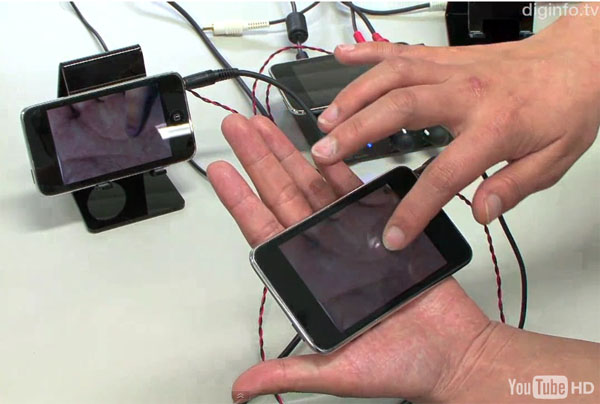This nifty project concept from Tokyo explores visual and tactile stimuli and how these can be applied in mobile communications. Imagine being able to touch and feel someone even when they’re far away!
Just when we thought a long distance kiss was enough, researchers from Japan’s University of Electro-Communications takes it to the next level. The Tickle Transmission Device is designed to let people send touch through the internet, as if they were tickling a distant friend in person. And the great thing about this interface is that it’s compatible with your good old iPhone!
How does it work? First, you should rest your iPhone on your palm, an installed app in your phone shows a pre-loaded image of a palm, complete with the lines and ridges. Visually, your brain is telling you that this image blends in with your real palm. The person on the other end, or the one who will be sending you a tickle, also places his iPhone on his palm in the same manner.
When your buddy scrolls his finger across his iPhone screen or his “palm,” your own iPhone shows an image of a finger being dragged across your screen in real time. You can repeat this gesture back to your friend, and an image of a finger appears on his iPhone screen as well.
According to the researchers, scientific data has proven that the brain responds upon seeing the tickling gesture (the finger moving across the palm), and so the person feels tickled even when no skin contact occurs. The Tokyo team intends to make the tickling gesture more realistic by activating a vibration mode on the iPhones when friends are tickling each other.
It would be interesting if the university team extends this tickling device for other body parts, like the feet! Or maybe they can combine the tickle system with this Apple Gamepod to make gaming more realistic. In any case, they are currently working out the bugs on the Tickle Transmission Device, so that eventually it can work over a network or even via phone call.
Via: DigInfo TV











